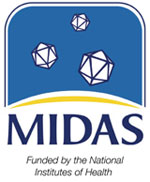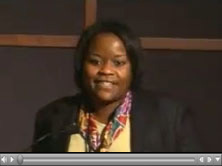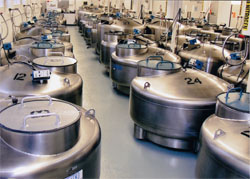 Five years ago this summer, MIDAS, the Models of Infectious Disease Agent Study, was born. When we began, we knew the effort to develop computational models of disease spread would play a role in preparing for new outbreaks—we just didn’t think it’d be so immediate. First with H5N1 fears and now with the H1N1 pandemic, our researchers have provided computational models to help decisionmakers from all levels of the government plan ways to control flu.
Five years ago this summer, MIDAS, the Models of Infectious Disease Agent Study, was born. When we began, we knew the effort to develop computational models of disease spread would play a role in preparing for new outbreaks—we just didn’t think it’d be so immediate. First with H5N1 fears and now with the H1N1 pandemic, our researchers have provided computational models to help decisionmakers from all levels of the government plan ways to control flu.
While modeling is just one of many tools used in making policy recommendations, it can help explore different scenarios and outcomes. In the case of flu, MIDAS scientists have used their models to help answer questions like:
- Can you contain a pandemic locally?
- What’s the best way to slow the spread of flu while we develop a vaccine?
- What’s the impact of non-pharmaceutical interventions?
- Should we distribute antivirals before an outbreak?
As we head into the next five years, we are adding two new centers and three research groups that are pretty exciting. They bring expertise in such areas as MRSA modeling, high-performance computing, statistics, social behavior and visualization tools for non-experts. We’re also going to put a lot more effort into understanding the ecology and evolution of disease, the impact of co-infections, and antibiotic and antiviral resistance.
The two new centers have an additional charge in education and outreach, particularly with public health officials from around the world. I am especially looking forward to this, since there’s such a great need for people with backgrounds in infectious disease epidemiology to also be able to do analytical and computational work.
The thoughtful, careful studies we do through MIDAS require a diverse group of people to communicate with each other every day. One thing I love about the way MIDAS has matured over the years is that we’ve built a level of trust and collaboration. Our researchers freely share data, ideas, and analytical and computational tools.
As we’ve learned, health policy questions emerge and develop almost instantly as new issues arise. Our challenge will continue to be modeling in this real-time context.
 The August issue of NIH’s Extramural Nexus includes two announcements that might interest you.
The August issue of NIH’s Extramural Nexus includes two announcements that might interest you.


 As you may recall from an earlier Feedback Loop message, NIGMS hosted its first workshop to help postdocs successfully transition to independent positions. We just posted videos for all the presentations.
As you may recall from an earlier Feedback Loop message, NIGMS hosted its first workshop to help postdocs successfully transition to independent positions. We just posted videos for all the presentations.


